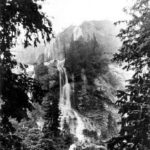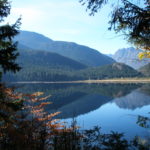The following are the current pictorial presentations I give about British Columbia history:
Please contact me by email: cathgilb at telus.net (replace the word ‘at’ with the @ symbol) to book a talk for your group or organization, in person or via Zoom or Bluejeans.
A Journey Back to Nature, a History of Strathcona Provincial Park: This talk is based on the contentious history of BC’s first provincial park, established in 1911 as per my book of the same title. With numerous never before seen images, this story fills many gaps in the knowledge of both the Park and the region’s history, in particular shedding light on the period of the 1930s to 1950s. Highlighted are the environmental battles fought in the early ’50s and late 1980s by those who wished to protect the park from development by industry.
The Fort at Yorke Island, 1937—1945: Based on my book about Yorke Island, Yorke Island and the Uncertain War, this talk looks at the reasons for constructing a WWII defence fort on a small isolated island in Johnstone Strait, northeast of the Kelsey Bay port that had no amenities: no fresh water, roads or electricity and no existing buildings. Through interviews with local people who remembered the fort and the military personnel stationed there, and the many photos gathered from them and from veterans, I tell the human side of surviving at Yorke Island, which brings with it a surprising amount of humour.
It’s a Maritime War—the boats and men that protected BC’s coast and beyond during WWII. Derived from research into Yorke Island and articles written for the Western Mariner Magazine about the Fishermen’s Reserve and RCAF Marine Squadron, this presentation focuses on the many vessels put to use and built specifically for World War II and protecting the British Columbia coast. The Royal Canadian Navy began WWII with just 13 vessels, and because there was no centralized Armed Forces, the Air Force and Army also had their own fleets. Much of the material for this presentation comes from interviews with veterans who served on these boats and most of the images are from their personal collections.
The Nootka Crisis – Spain or Britain? This talk explains the events that led up to the Nootka Crisis of 1789 at today’s Yuquot (Friendly Cove) in Nootka Sound, using maps and several images sketched by ship’s artists such as John Webber and Jose Cardero. The Crisis, an incident between Spain and Britain for territorial rights at Nootka Sound, came close to igniting a war between these two European powers. This presentation highlights the scoundrel and opportunist John Meares who precipitated the incident, and the visit of Captain George Vancouver of 1792 with Spanish Captain Juan Francisco de la Bodega y Quadra. At this historic meeting, commemorated in recent years by a beautiful stained glass window in the church at Friendly Cove, the two Captains attempted to resolve their countries’ territorial dispute. The presentation will include a discussion about the Mowachaht, whose territory was at the centre of this dispute and the relationship between successive European Captains and the powerful Mowachaht Chief Maquinna.
Naming the Named: the surveying, mapping and naming of British Columbia’s coast From Captain James Cook to Captain George Vancouver of the late 1770s to Captain George Richards in 1860, and the Spanish Captains Quadra, Galiano and Valdes in 1792, this talk traces European exploration and how both the British and Spanish left their imprint on the British Columbia Coast through the names they gave to geographical features and waterways. While there may have been First Nations names for many locations renamed by these explorers, few of these names exist today. Using historical maps, this presentation discusses the progress of European surveys of the coast and how territory was claimed through mapping, a concept not know to the Aboriginal inhabitants of the west coast.
The History of Strathcona Park Lodge & Outdoor Education Centre From the myriad of photos collected by Lodge founder Myrna Boulding and based on her book, Surviving Strathcona Style, Off the Grid and On the Edge, this presentation explains how two intrepid school teachers ‘fell into’ the tourism business when they took over a 1930s constructed lodge that had been dragged across Upper Campbell Lake and up to the side of the Gold River Highway in 1959. How they eventually developed both the tourism business and the concept of a boy’s camp into an internationally known resort and outdoor education centre is explored through the photos and highlighted is the important relationships the Bouldings had with such renowned conservationists as Roderick Haig-Brown. That the Lodge still operates successfully today is a testament to the Boulding family’s perseverance and dedication, as well as the contribution of the hundreds of staff who have passed through the Lodge’s portal for almost 60 years.
Please contact me by email: cathgilb at telus.net (replace the word ‘at’ with the @ symbol) to book a talk for your group or organization, in person or via Zoom or Bluejeans.




